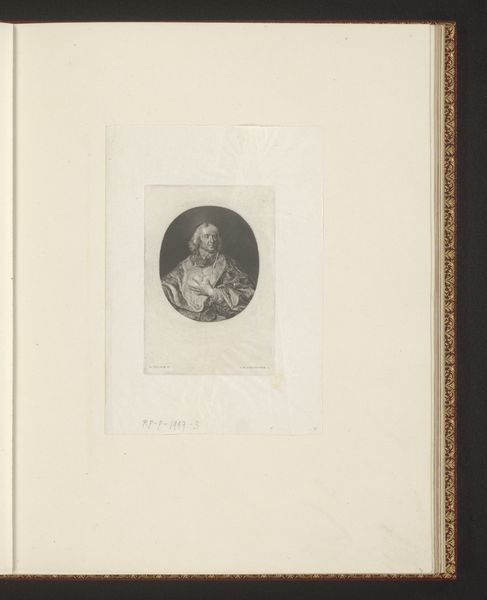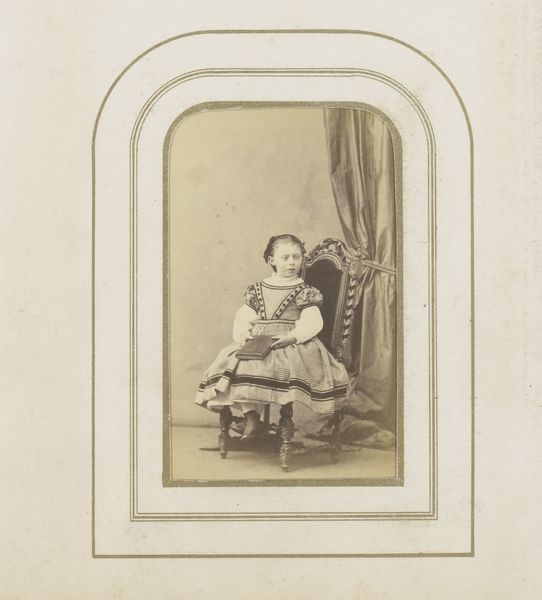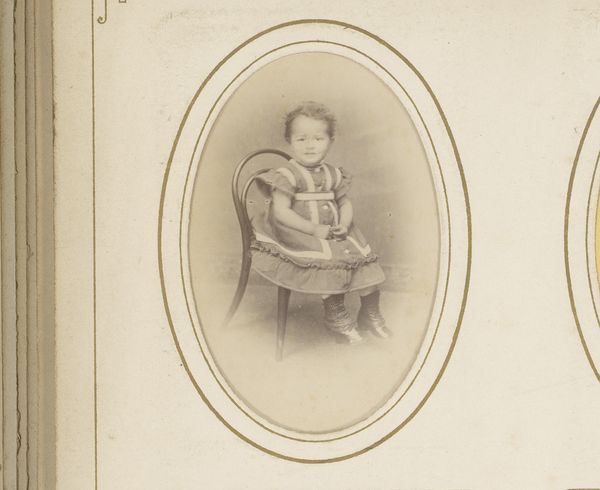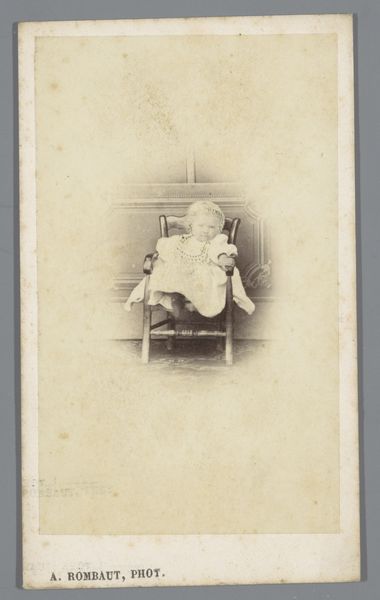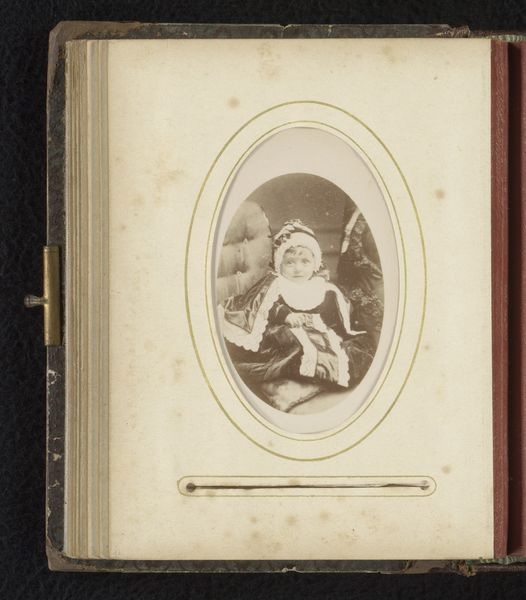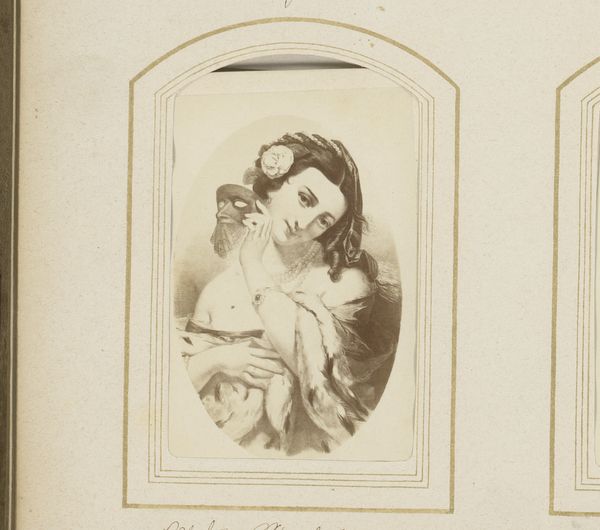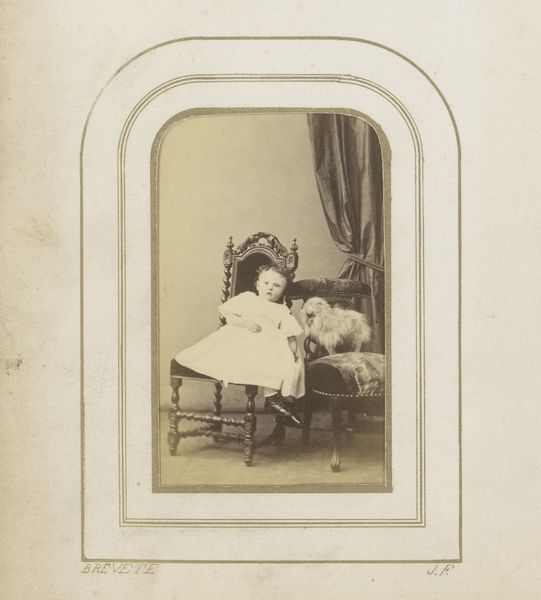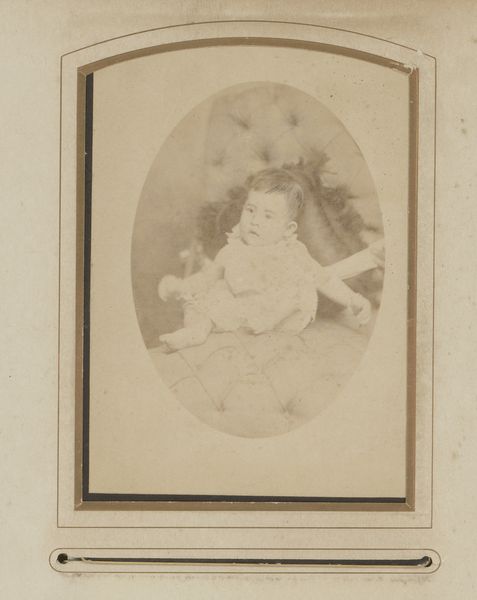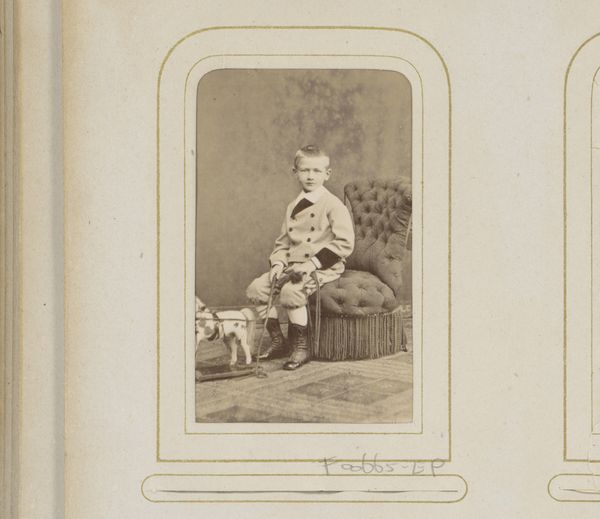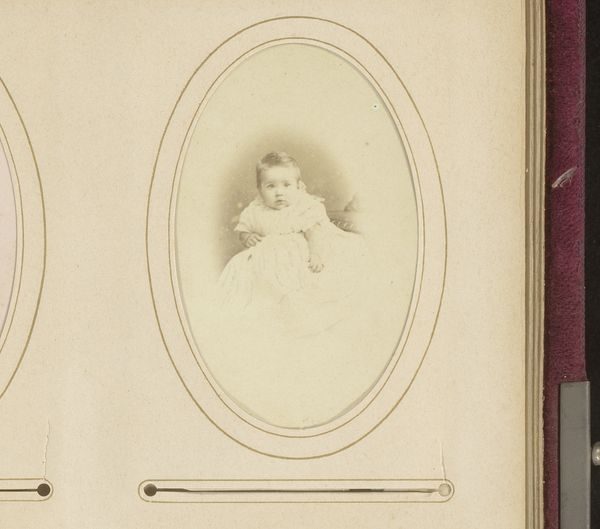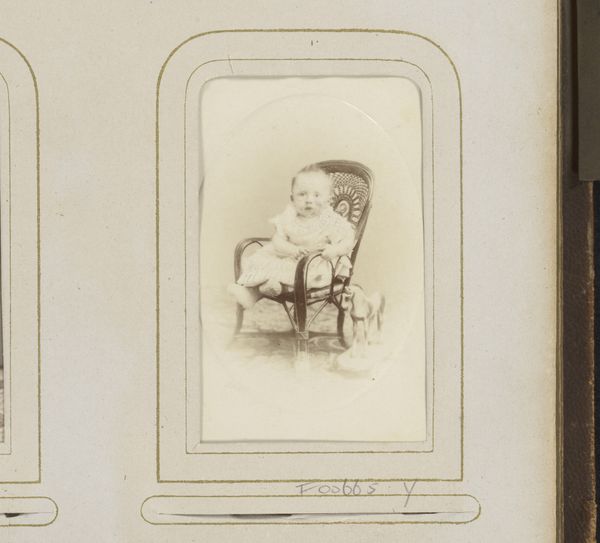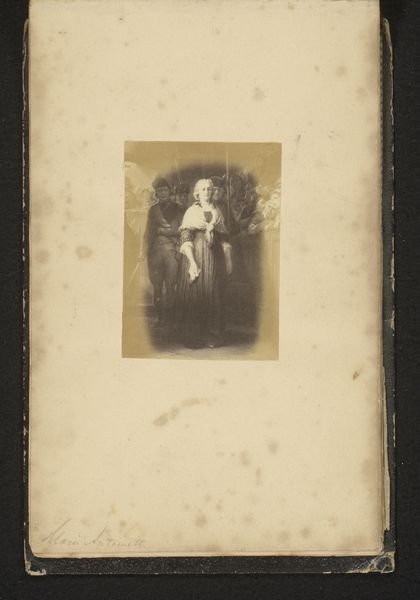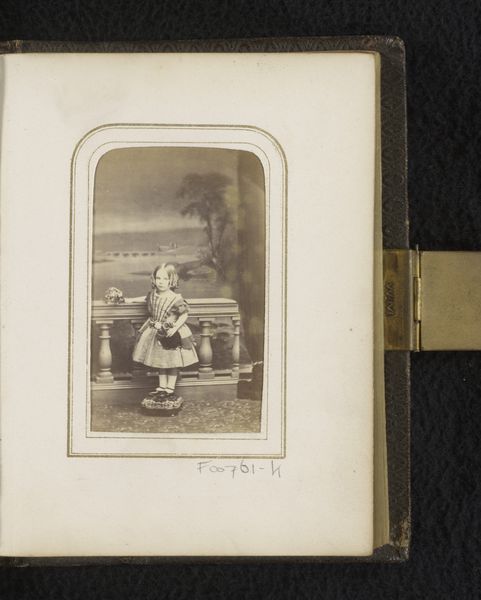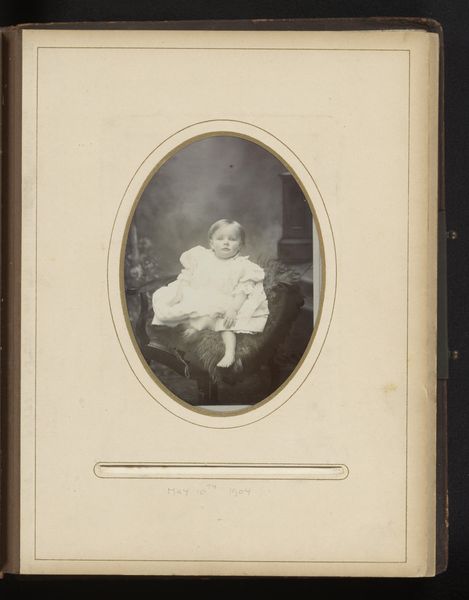
photography
#
portrait
#
photography
#
19th century
Dimensions: height 103 mm, width 62 mm
Copyright: Rijks Museum: Open Domain
This is a photograph of a baby, made by Émile Fürst sometime between 1834 and 1922. It’s a modest object, just a few inches tall, but it speaks volumes about the changing status of images in the 19th century. Photography was really the first technology to enable mass reproduction. The rise of photography studios meant that for the first time, people from a range of social classes could have their image captured. This little portrait is an example of a carte-de-visite, a small photograph mounted on card stock. These were relatively inexpensive and became incredibly popular, almost like trading cards. People would collect them in albums and exchange them with friends and family. So, while photography is often thought of as high art, it's important to remember its roots in popular culture and its role in transforming how we see ourselves and others. Fürst's baby portrait is not just an individual likeness, but a symbol of broader cultural shifts tied to industrial production and mass consumption.
Comments
No comments
Be the first to comment and join the conversation on the ultimate creative platform.
